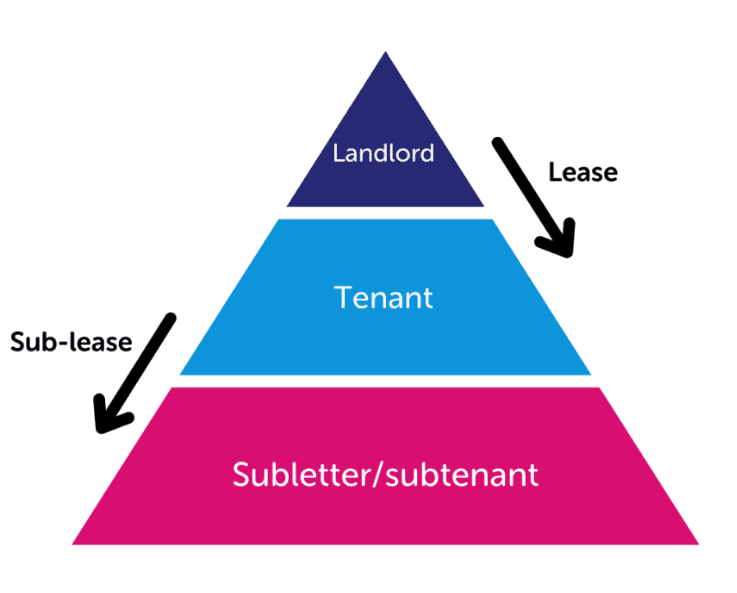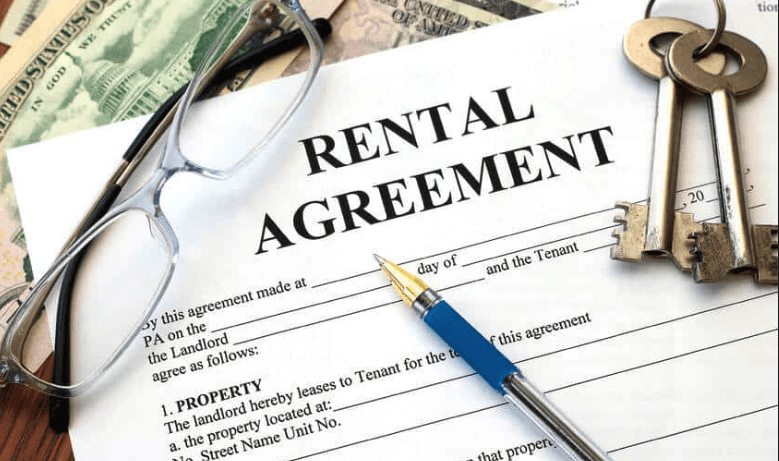Navigating the world of rental agreements can be complex, but understanding the difference between subletting and subleasing is crucial. In this blog post, we will explore the ins and outs of “subletting vs subleasing”, helping you make informed decisions based on your individual needs and circumstances.
Both options provide unique opportunities to landlords, tenants, and subtenants, but they also come with their own set of challenges and responsibilities. By the end of this post, you will have a clear understanding of the key differences between subletting and subleasing, their respective advantages and drawbacks, and the responsibilities of each party involved. Moreover, you will learn how to successfully navigate the process of subletting or subleasing a property while taking into account legal considerations and rental agreements.
Related Article: What Is The Risk-Free Rate Of Return?
Key Takeaways
Subletting and subleasing are two distinct rental options with different benefits and drawbacks.
Responsibilities of all parties must be understood to ensure a successful experience.
Consider individual needs, local laws & regulations when making the decision between subletting or subleasing.
Understanding Subletting and Subleasing
As you delve into rental agreements, you’re bound to come across the terms sublet and sublease. While they may seem interchangeable, they represent distinct concepts in real estate, leading to the common question of sublet vs sublease.
Understanding the difference between subletting and subleasing, often referred to as “sublet vs sublease,” is vital for making informed decisions about your rental property.
Subletting Defined
Subletting, also known as a sublease or sublet, is an arrangement in which an existing tenant finds a new tenant for the landlord to lease the property to, thereby ending the original lease. In this scenario, the new tenant becomes legally responsible for fulfilling the lease terms, and the original tenant is absolved of all obligations under the lease. To formalize this process, a sublet agreement is often used.
This arrangement offers the original tenant the flexibility they might need when their lease expires, allowing them to terminate their existing lease early or temporarily vacate the rental unit. However, it also requires the landlord’s involvement and approval, ensuring that the new tenant or another tenant is a reliable candidate to take over the lease through a new rental agreement, which replaces the previous rental agreement.
Subleasing Defined
Subleasing, on the other hand, involves an existing tenant renting the property to a new tenant without nullifying the original lease. In this case, the original tenant acts as a sub-landlord, collecting rent from the new tenant and continuing to pay rent to the landlord directly. The original tenant remains legally accountable for the rental unit, including any breaches of the lease terms by the subtenant.
Subleasing commonly occurs when a tenant decides to rent out a part of their rental property, like an extra room in an apartment. This arrangement allows the original tenant to generate additional income while still maintaining their lease with the landlord. However, it also comes with the added responsibility of managing the subtenant and ensuring that rent is paid on time.
Key Differences Between Subletting and Subleasing

The primary distinctions between subletting and subleasing, focusing on subletting involve:
Landlord involvement: In subletting, the landlord is directly involved in the process and creates a new lease agreement with the new tenant.
Original lease: In subletting, the original lease is terminated.
Payment: The new tenant assumes all responsibilities for paying rent.
Tenant responsibility: The new tenant also assumes all responsibilities for adhering to the lease terms.
On the contrary, subleasing involves less direct landlord involvement, and the original lease stays in effect. The subtenant pays rent to the original tenant, who then pays the landlord. The original tenant retains responsibility for the lease terms and rent payments, acting as a sublandlord to the subtenant. This arrangement provides more flexibility for the original tenant, who can continue to collect rent and maintain their lease with the landlord.
Advantages of Subletting and Subleasing

Depending on the specific circumstances, both subletting and subleasing present advantages for tenants, landlords, and subtenants. Subletting provides tenants with the option to end or pause their lease without financial repercussions, while subleasing allows tenants to generate additional income by renting out unused space. Landlords benefit from receiving rent payments on time and avoiding legal issues with tenants who cannot complete their lease term.
Subtenants gain access to short-term rental solutions, flexibility, and potentially better rental rates than entering into a long-term contract. In both subletting and subleasing, all parties involved can benefit from the increased options available in the real estate rental market, including more size options and better locations.
Tenant Benefits
For tenants, the primary benefits of both subletting and subleasing include ending or pausing a lease without financial damage and making extra money by renting out unused space. Subletting allows tenants to terminate their lease early without incurring penalties, providing flexibility in the event of unexpected life changes, such as job relocation or personal circumstances.
Subleasing, on the other hand, provides tenants with an opportunity to generate additional income by renting out a portion of their rental property, such as an extra room in an apartment. This arrangement allows the original tenant to maintain their lease with the landlord while benefiting from the extra income received from the subtenant’s rent payments.
Landlord Benefits
Landlords also benefit from subletting and subleasing arrangements. In the case of subletting, landlords can receive rent payments on time from a new tenant who is legally responsible for fulfilling the lease terms. This ensures that the rental property remains occupied and generates income, even if the original tenant needs to vacate the premises.
In subleasing scenarios, landlords may not be directly involved in the process, but they still receive rent payments from the original tenant, who acts as a sublandlord and is responsible for collecting rent from the subtenant. This arrangement maintains the original lease with the tenant, ensuring that the landlord continues to receive rental income and avoids potential legal issues that could arise if the tenant could not complete their lease term.
Subtenant Benefits
Subtenants also reap the rewards of subletting and subleasing arrangements. These benefits include short-term rental solutions, increased flexibility, and potentially more advantageous rental rates than entering into a long-term contract. Subtenants can enjoy the stability and cost-effectiveness of subletting or subleasing, without being tied down to a long-term lease.
Furthermore, subtenants have access to unique rental opportunities, such as renting a room in a prime location or occupying an entire property for a limited time. This flexibility allows subtenants to explore different living arrangements and find the perfect fit for their needs and preferences.
Potential Drawbacks of Subletting and Subleasing
While subletting and subleasing offer numerous benefits, there are potential drawbacks to consider. Legal complexities and difficulties in assessing tenants can pose challenges for all parties involved in the process. For instance, in subletting, landlords must ensure that the new tenant is reliable and capable of adhering to the lease terms.
Similarly, in subleasing, the original tenant remains legally accountable for the rental unit, including any breaches of the lease terms by the subtenant. This additional responsibility can put pressure on the original tenant, who must ensure the subtenant pays rent on time and abides by the lease terms.
Party Responsibilities in Subletting and Subleasing
In both subletting and subleasing arrangements, each party bears specific responsibilities. Landlords must ensure that tenants follow the terms of the lease agreement and pay rent punctually, regardless of whether the arrangement is a sublet or sublease. Tenants are responsible for ensuring that subtenants adhere to the terms of the lease agreement and pay rent on time, whether in a sublet or sublease arrangement.
Subtenants, on the other hand, must abide by the terms of the lease agreement and pay rent punctually, as stipulated in the sublet or sublease agreement. By understanding and fulfilling their respective responsibilities, all parties involved in subletting and subleasing can enjoy a harmonious and mutually beneficial rental experience.
Steps to Successfully Sublease a Property
To successfully sublease a property, following a step-by-step process is crucial to ensure all parties are aware of their rights and obligations. The first step is to check your lease agreement to determine whether you are allowed to sublease your property. Next, obtain your landlord’s approval for the sublease, as this will help avoid potential legal issues down the line.
Once you have your landlord’s approval, begin the search for a suitable subtenant. This involves screening applicants, checking references, and verifying their financial stability.
Finally, draft a legal sublease agreement that outlines the terms of the sublease, such as duration and rent amount. By following these steps, you can ensure a smooth and successful sublease experience for all parties involved.
Legal Considerations and Rental Agreements

While navigating the legal landscape of subletting and subleasing can be complex, it’s of utmost importance to ensure all parties are protected and fully aware of their rights and obligations. Consulting a real estate broker and understanding local laws can help you navigate the process and avoid potential pitfalls.
In addition to consulting a real estate broker and understanding local laws, it is important to draft a clear and legally binding sublease agreement that outlines the terms of the sublease, such as duration and rent amount. By taking these legal considerations into account, you can protect yourself and your rental property, ensuring a successful sublet or sublease experience.
Tips for Choosing Between Subletting and Subleasing
When choosing between subletting and subleasing, it’s important to factor in your individual needs and circumstances. Factors to consider include the duration of the rental, the degree of control desired over the tenant, and potential legal matters that could arise. Additionally, verify local laws and regulations to ensure compliance.
By carefully weighing the pros and cons of subletting and subleasing, as well as evaluating your specific situation, you can make an informed decision that best suits your needs. Whether you choose to sublet or sublease, understanding the process and responsibilities involved can help you navigate the world of rental agreements with confidence and ease.
Case Studies of Subletting and Subleasing
Practical scenarios can shed light on the concepts and advantages of subletting and subleasing. For instance, a tenant who relocates for a job opportunity may choose to sublet their apartment to a new tenant, allowing them to get out of the lease. This arrangement provides the original tenant with the flexibility needed to accommodate their relocation and ensuring their rental property is occupied and relieves them of financial responsibility and typically fees.
In another example, a tenant with an extra bedroom in their apartment may opt to sublease the room to a subtenant, generating additional income while maintaining their lease with the landlord. This arrangement allows the original tenant to benefit from the extra income received from the subtenant’s rent payments while still having control over their rental property.
These case studies illustrate the potential benefits and challenges associated with subletting and subleasing, providing valuable lessons for those considering these rental options. By understanding the real-world implications of subletting and subleasing, you can make informed decisions that best suit your needs and circumstances.
Summary
In conclusion, understanding the differences between subletting and subleasing is essential for navigating the world of rental agreements. Both options provide unique opportunities and challenges for landlords, tenants, and subtenants. By carefully considering your individual needs and circumstances, as well as being aware of the legal implications and responsibilities involved, you can make an informed decision that best suits your situation.
Whether you choose to sublet or sublease, understanding the process and responsibilities involved is necessary. Armed with this knowledge, you are now better equipped to make the best choice for your rental property and enjoy the flexibility and benefits that subletting and subleasing have to offer.
Frequently Asked Questions
What is the difference between a sublease and an sublessee?
A sublease is a contractual agreement between the original lessee (the sublessor) and a secondary tenant (the sublessee), creating a new relationship between the two. The original lessee retains their responsibilities under the lease, while the sublessee does not have any privilege of contract with the property owner.
Is having a roommate the same as subletting?
Having a roommate is not the same as subletting; legally, subletting requires proper procedures to be followed and written consent from a landlord.
What is subletting in legal terms?
Subletting is the act of adding a new tenant to an existing lease agreement by replacing someone who has moved out. It can also occur when introducing any new tenant to the agreement.
Can you sublease in Florida?
Yes, you can sublease in Florida, provided it isn’t prohibited in the lease contract.
What are the benefits of subletting and subleasing for tenants, landlords, and subtenants?
Subletting and subleasing offer a variety of advantages for tenants, landlords, and subtenants, such as cost savings, flexibility, better rental options, timely rent payments, and short-term rental solutions.




